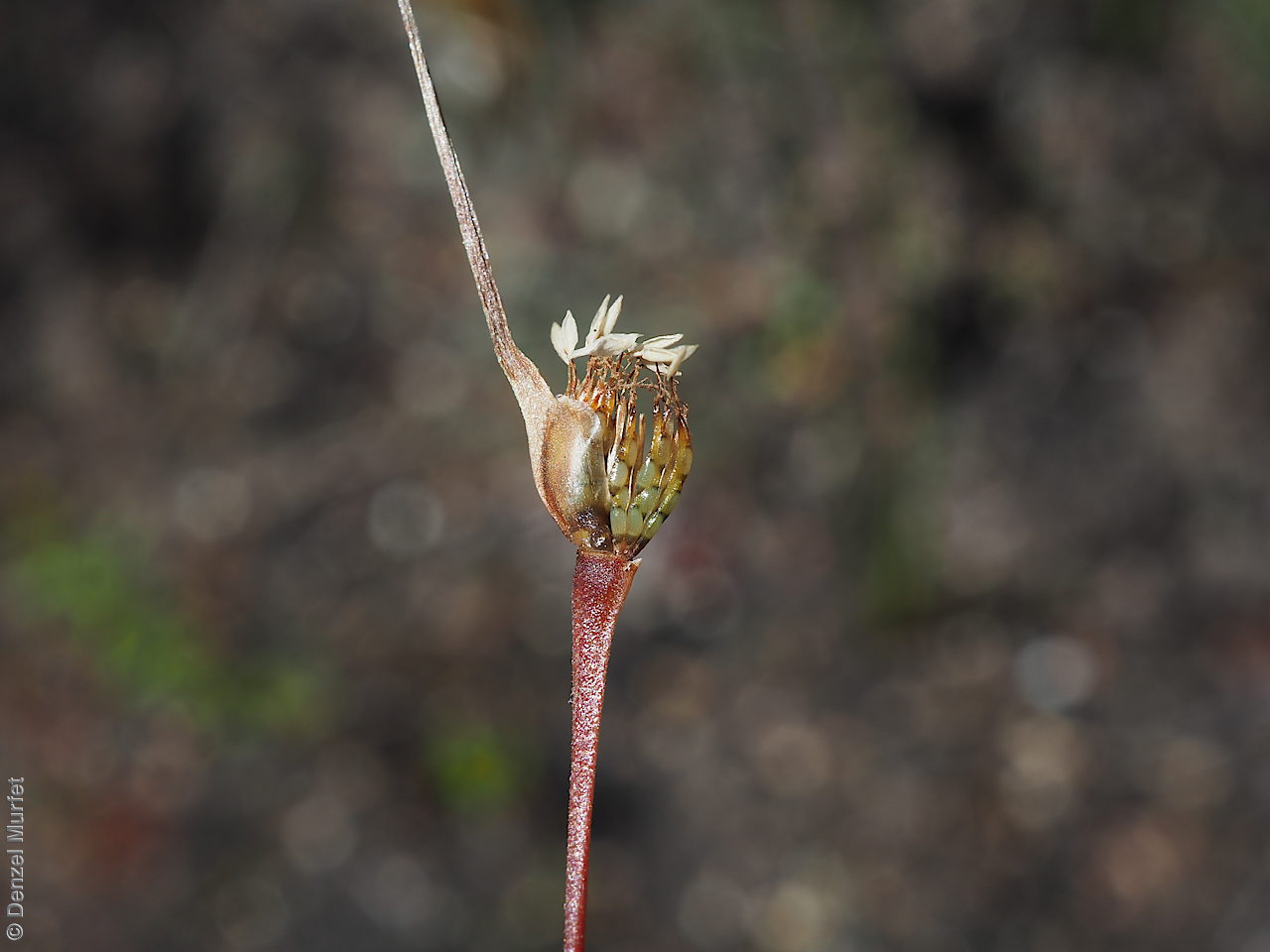








Botanical art
Prior names
Devauxia aristata
Etymology
Centrolepis from the Greek 'kentron' meaning a spur and 'lepis' meaning scale, referring to the points on the bracts of Centrolepis fascicularis, the type specimen for the genus. Aristata from the Latin 'arista' meaning bristle or awn, alluding to the two long primary bracts.
Distribution and status
Found from the southern Flinders Ranges, southern Eyre Peninsula to the lower South-east of South Australia growing in moist micro-habitats within woodland, open forest, heath and mallee, mainly on sandy soils, often growing with other Centrolepis species. Also found in Western Australia, New South Wales, Victoria and Tasmania. Native. Common in South Australia. Uncommon in New South Wales. Common in the other States.
Herbarium regions: Flinders Ranges, Eyre Peninsula, Northern Lofty, Murray, Yorke Peninsula, Southern Lofty, Kangaroo Island, South Eastern, Green Adelaide
NRM regions: Adelaide and Mount Lofty Ranges, Eyre Peninsula, Kangaroo Island, Northern and Yorke, South Australian Arid Lands, South Australian Murray-Darling Basin, South East
AVH map: SA distribution map (external link)
Plant description
Erect annual herb to 10 cm high, bright-green or becoming reddish after flowering. Leaves grass-like to 6 cm long and 1.6 mm wide, glabrous, shiny. Flower head flattened, oblong-ovoid to 3 mm wide with two long opposite primary bracts, somewhat gaping with cartilaginous brown bases and leaf-like laminae; glabrous, the outer bract to 35 mm long, the inner one to 30 mm. Flowering between September and December. Fruits are brown ovoid head. Seeds translucent, ellipsoide to 0.7 mm long and 0.3 mm wide. Seed embryo type is broad.
Seed collection and propagation
Collect seeds between October and January. Collect whole plant that are starting to dry off and turning pale straw colour by picking then off with your fingers. Place the plants in a tray for 1-2 week to dry. Then rub the heads with your hands or a rubber bung to dislodge the seeds. Pass the material through a sieve to separate the unwanted material. The finer material will contain both seeds (soft) and frass (hard) usually distinguishable from each other. With finer sieves, the seeds can be separated from the frass but this is not essential for storage or propagation. Store the seeds with a desiccant such as dried silica beads or dry rice, in an air tight container in a cool and dry place.